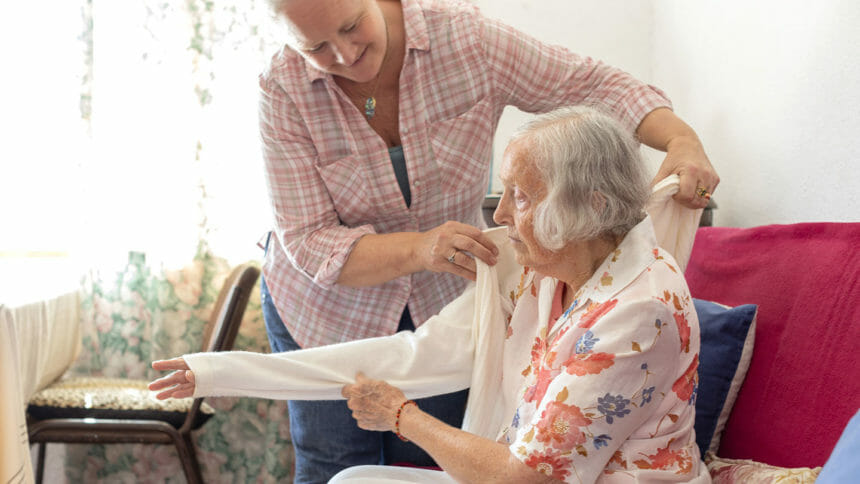
Area Agencies on Aging (AAA) are getting creative with public and private dollars to solve the caregiver shortage, including tapping local service businesses for help. Local and regional agencies shared their strategies Tuesday during a webinar sponsored by USAging.
In rural Vermont, the Northeast Kingdom Council on Aging tapped local laundries, home cleaning services and grocery stores to help fill gaps in homemaker services for older adults during the COVID-19 pandemic. Executive director Meg Burmeister said her agency leveraged Medicaid funds to help provide cleaning, laundry and grocery services to seniors when the local Visiting Nurse Association was unable to offer personal care.
“We really had to step outside the box in a model of a program that had traditionally been done with a homemaker going in from a visiting nurse to really explore the needs that [older adults] had,” Burmeister explained.
AgingUS found widespread caregiver shortages among AAAs in a poll it released last month. Nearly every agency (94%) reported seeing an increase in the number of older adults requesting support and in the complexity of the needs of those seniors. At the same time, more than half of agencies also reported shortages in staff for personal care, home care, home healthcare and respite care.
“With evidence mounting as to the value of these services to the health and well-being of older adults, it is unacceptable that our nation would fail to address these workforce issues, leaving older adults at risk of poor health outcomes and nursing home admission,” USAging CEO Sandy Markwood said in a statement following release of the poll.
Still, some agencies have found workarounds or at least temporary stopgaps to the worker shortage. In western Iowa, Connections Area Agency on Aging used Medicaid Direct Service funds and grant money from a local foundation to hire a rapid response aide to help people transitioning home from the hospital or rehabilitation facilities. Kelly Butts-Elston, the agency’s executive director, said she had to seek nontraditional solutions because home care agencies did not have enough workers to satisfy requests for help.
“We were getting responses from our homemaker partners that they couldn’t get anyone for two weeks,” Butts-Elston said during the webinar. “[The rapid response aide] was one of the best things we’ve ever done. We can get someone to the client on day one to do a lot of running around with errands, getting medications and meals for them.”
The agency directors all acknowledged the staffing pressure private home care agencies have been under during the COVID-19 pandemic. The caregiver crisis has deepened over the past few years. The Bureau of Labor Statistics projects the home care industry will need to add 600,000 new jobs annually until the end of the decade.



